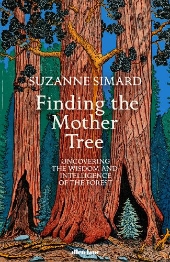





 1
1




cesca beamish wrote:I recently watched the Suzanne Simard TED talk How Trees Talk To Each Other - on the micorrhizal connections between trees. A fascinating subject and I want to find out more but I'm not managing to find any leads. Any pointers would be gratefully received. search terms of mother/nurse/hub tree are just too open.
I have questions like why was she not surprised that the cedar was not involved in the carbon sharing. Why conifer and deciduous ? I thought i'd read that coniferous prefer a very high fungally dominant soil and deciduous a much more even bacteria : fungus biomass ratio. How can I make educated choices of nurse trees?
The whole soil food web is wonderful and I'd like to apply this understanding to my forest garden growing.
Thanks
List of Bryant RedHawk's Epic Soil Series Threads We love visitors, that's why we live in a secluded cabin deep in the woods. "Buzzard's Roost (Asnikiye Heca) Farm." Promoting permaculture to save our planet.
















List of Bryant RedHawk's Epic Soil Series Threads We love visitors, that's why we live in a secluded cabin deep in the woods. "Buzzard's Roost (Asnikiye Heca) Farm." Promoting permaculture to save our planet.








Cultivate abundance for people, plants and wildlife - Growing with Nature







 1
1




Standing on the shoulders of giants. Giants with dirt under their nails
 1
1





|
Paper beats rock. Scissors beats tiny ad.
Learn Permaculture through a little hard work
https://wheaton-labs.com/bootcamp
|








